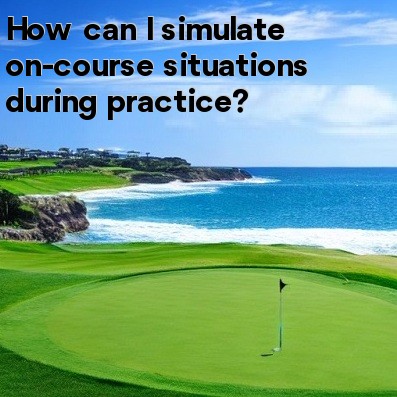
In golf, How can I simulate on-course situations during practice?
Practicing golf skills on the driving range is essential, but if you want to take your game to the next level, you need to replicate on-course situations during practice. By simulating different scenarios, you can improve your decision-making skills, learn to adapt to various conditions, and enhance your overall performance. Here are a few ways you can simulate on-course situations during practice:
- Create target zones: Set up different target zones on the driving range to simulate fairways, greens, and hazards. This will help you practice hitting shots with accuracy and precision. Use flags or markers to define these zones.
- Practice uneven lies: Golf courses are rarely flat, so it's crucial to practice hitting shots from uphill, downhill, and sidehill lies. Find a slope on the driving range and vary your stance to simulate these uneven lies. This will improve your ability to adjust your swing to different terrains.
- Use course management techniques: Rather than hitting the same club repeatedly at the driving range, practice using different clubs and shot types to simulate real on-course situations. Imagine yourself on the course, facing various challenges, and plan your shots accordingly.
- Create pressure situations: Pressure situations on the golf course can affect your decision-making and execution. To simulate this, set up goals or challenges during your practice sessions. For example, try hitting a specific number of consecutive shots within a target zone, or play a simulated round with imaginary opponents.
- Practice your pre-shot routine: Your pre-shot routine plays a crucial role in your on-course performance. Use your practice sessions to develop and refine your pre-shot routine. Visualize the shot, go through your routine step by step, and approach each shot with the same focus and preparation as you would on the course.
- Play different course layouts: Research different golf courses and their layouts, and try to replicate them on the driving range. Use flags or markers to represent specific targets, fairways, and hazards. This will help you practice adapting to different course designs and improve your strategic decision-making.
- Simulate the mental aspect: Golf is as much a mental game as it is physical. During your practice sessions, simulate the mental side of the game by visualizing different scenarios, focusing on specific targets, and practicing mental exercises, such as staying calm under pressure or managing distractions.
By incorporating these simulation techniques into your golf practice, you can better prepare yourself for on-course situations. Remember to be creative, visualize the course, and approach each practice session with a goal in mind. The more you simulate real golf scenarios, the more effective your practice will be, and the better prepared you'll be for your rounds.





